No questions found
(a) A list of compounds is shown.
- aluminium oxide
- calcium bromide
- calcium oxide
- ethane
- ethene
- hydrogen chloride
- methane
- nitrogen dioxide
- potassium iodide
- potassium manganate(VII)
- sodium chloride
Answer the following questions using only the compounds in the list.
Each compound may be used once, more than once or not at all.
Which compound:
(i) when in acidified solution, is used to test for sulfur dioxide
............................................................................................................................................. [1]
(ii) is the main constituent of natural gas
............................................................................................................................................. [1]
(iii) when dissolved in water, gives a yellow precipitate on addition of acidified aqueous silver nitrate
............................................................................................................................................. [1]
(iv) is used in flue gas desulfurisation to neutralise acidic gases
............................................................................................................................................. [1]
(v) is a reactant used in the manufacture of ethanol?
............................................................................................................................................. [1]
(b) What is the meaning of the term compound?
.............................................................................................................................................................. [2]
(c) Complete the electronic structure of a molecule of hydrogen chloride.
Show only the outer shell electrons.
[2]
Iron is extracted by heating a mixture of coke (carbon), limestone and iron ore in air in a blast furnace.
A diagram of the blast furnace is shown.
(a) Name the ore of iron added to the blast furnace.
.................................................................................................................................................................. [1]
(b) The impurities in the iron ore are removed as slag.
(i) What information in the diagram shows that slag is less dense than molten iron?
.................................................................................................................................................................. [1]
(ii) Which one of the substances added to the blast furnace helps to remove the impurities?
Explain how it does this.
substance ..................................................................................................................................................
explanation .................................................................................................................................................
...................................................................................................................................................................
................................................................................................................................................................... [3]
(c) Hot air is blown into the blast furnace.
Explain why.
...................................................................................................................................................................
................................................................................................................................................................... [1]
(d) The chemical equation for one of the reactions in the blast furnace is shown.
$\text{Fe}_2\text{O}_3 + 3\text{CO} \rightarrow 2\text{Fe} + 3\text{CO}_2$
(i) How does this equation show that $\text{Fe}_2\text{O}_3$ has been reduced?
................................................................................................................................................................... [1]
(ii) When 16.0 g of $\text{Fe}_2\text{O}_3$ react with excess carbon monoxide, 11.2 g of iron are produced.
Calculate the mass of iron produced when 4.0 g of $\text{Fe}_2\text{O}_3$ react with excess carbon monoxide.
mass of iron = ............................... g [1]
(e) An isotope of iron is shown.
$\text{ }^{58}_{26}\text{Fe}$
Deduce the number of electrons, protons and neutrons in an atom of this isotope of iron.
number of electrons .................................................................................................................................
number of protons ..................................................................................................................................
number of neutrons ................................................................................................................................ [3]
(f) Iron is a transition element.
Which two of these statements about iron are correct?
Tick two boxes.
- Iron forms coloured compounds.
- Iron can act as a catalyst.
- Iron is brown when freshly cut.
- Iron has a low density.
- Iron has a low melting point. [2]
Water is essential for many industrial processes.
(a) State one use of water in industry.
.........................................................................................................................................................
(b) What is the pH of pure water?
Draw a circle around the correct answer.
pH 0 pH 6 pH 7 pH 14
(c) Filtration and chlorination are two of the steps used in water treatment.
Describe the purpose of each of these steps.
filtration ..................................................................................................................................................
.....................................................................................................................................................................
chlorination ..................................................................................................................................................
.....................................................................................................................................................................
(d) The changes of state of water are shown.
Give the names of the changes of state represented by A and B.
A ..................................................................................................................................................
B ..................................................................................................................................................
(e) The table compares the reactions of four metals with both steam and dilute hydrochloric acid.
[Table_1]
Put the four metals in order of their reactivity.
Put the least reactive metal first.
least reactive ----------------> most reactive
---------------------------------
Angelic acid and ethanoic acid are both carboxylic acids.
The structure of angelic acid is shown.
(a) (i) On the structure of angelic acid, draw a circle around the functional group that shows that it is a carboxylic acid. [1]
(ii) Deduce the formula of angelic acid to show the number of carbon, hydrogen and oxygen atoms. [1]
...........................................................................................................................
(iii) Angelic acid is an unsaturated compound.
Describe a chemical test to distinguish between an unsaturated and a saturated compound.
test ...........................................................................................................................
result with unsaturated compound ........................................................................
result with saturated compound .............................................................................. [3]
(b) The formula of ethanoic acid is $C_{2}H_{4}O_{2}$.
Complete the table to calculate the relative molecular mass of ethanoic acid.
Use the Periodic Table to help you.
[Table_1]
relative molecular mass = .................................. [2]
(c) Ethanoic acid can be reduced to ethanol.
Complete the structure of ethanol to show all of the atoms and all of the bonds.
[1]
(d) Ethanol can be manufactured by fermentation.
Describe the process of fermentation to include:
● the names of the reactants and catalyst
...........................................................................................................................
● the conditions required
...........................................................................................................................
...........................................................................................................................
● the name of the process used to separate the ethanol from the rest of the reaction mixture.
........................................................................................................................... [4]
[Total: 12]
The table shows some properties of four metals in Group I of the Periodic Table.
[Table_1]
(a) Complete the table to estimate:
• the melting point of rubidium
• the relative electrical conductivity of sodium. [2]
(b) What is the physical state of caesium at 20°C?
Give a reason for your answer. [2]
.......................................................................................................................................
.......................................................................................................................................
.......................................................................................................................................
(c) Describe the trend in the boiling points of the Group I metals. [1]
.......................................................................................................................................
.......................................................................................................................................
(d) When potassium reacts with water, a coloured flame is seen and a gas is produced that pops with a lighted splint.
(i) Complete the chemical equation for this reaction.
.....K + 2H$_2$O → 2KOH + ............ [2]
(ii) State the colour of the flame when potassium reacts with water. [1]
.......................................................................................................................................
(iii) The solution formed is alkaline.
Describe how you can use universal indicator solution to determine the pH of the solution. [2]
.......................................................................................................................................
.......................................................................................................................................
[Total: 10]
This question is about the reactions of magnesium with nitric acid.
(a) The equation for the reaction of magnesium with concentrated nitric acid is shown.
$$\text{Mg} + 4\text{HNO}_3 \rightarrow \text{Mg(NO}_3)_2 + 2\text{NO}_2 + 2\text{H}_2\text{O}$$
(i) The reaction is exothermic.
What is the meaning of the term exothermic?
............................................................................................................................. [1]
(ii) Which word best describes the compound Mg(NO\text{₃})\text{₂}?
Draw a circle around the correct answer.
acid \, base \, oxide \, salt [1]
(iii) Oxides of nitrogen are formed when fossil fuels are burned.
What type of chemical reaction occurs when fossil fuels are burned?
Draw a circle around the correct answer.
combustion \, cracking \, fermentation \, neutralisation [1]
(iv) Oxides of nitrogen dissolve in rain water to form acid rain.
State one adverse effect of acid rain on buildings.
............................................................................................................................. [1]
(b) When very dilute nitric acid reacts with magnesium powder, hydrogen is produced.
(i) Describe a practical method for investigating the rate of this reaction.
.............................................................................................................................
.............................................................................................................................
............................................................................................................................. [3]
(ii) What effect would each of the following have on the rate of this reaction?
• Larger pieces of magnesium are used instead of magnesium powder.
All other conditions stay the same.
.............................................................................................................................
• The temperature of the reaction mixture is increased.
All other conditions stay the same.
............................................................................................................................. [2]
[Total: 9]
(a) The electrolysis of dilute sulfuric acid produces gases at both electrodes.
(i) The incomplete apparatus is shown.
Complete the diagram by:
- labelling the anode and cathode
- adding connecting wires
- showing how the gases are collected.
[3]
(ii) Name the products formed at each electrode.
positive electrode ................................................................................................................
negative electrode ................................................................................................................
[2]
(b) Carbon dioxide is produced when sulfuric acid reacts with sodium carbonate.
Name the \textbf{two} other products which are formed.
.................................................................. and ............................................................
[2]
(c) Describe the test for carbon dioxide.
test .................................................................................................................................
observations ....................................................................................................................
[2]
(d) Carbon dioxide is a greenhouse gas.
State one effect of greenhouse gases on the environment.
..............................................................................................................................
[1]
(a) The structures of four substances C, D, E and F, are shown.
(i) Which one of these substances, C, D, E or F, is a gas at room temperature?
...................................................................................................................................................... [1]
(ii) What type of bonding is present in substance E?
...................................................................................................................................................... [1]
(iii) Which one of these substances, C, D, E or F, is soluble in water?
...................................................................................................................................................... [1]
(iv) Which one of these substances, C, D, E or F, conducts electricity when solid?
...................................................................................................................................................... [1]
(b) The halogens have molecules containing two atoms.
What is the name for molecules containing only two atoms?
...................................................................................................................................................... [1]
(c) The reaction of iodine with hydrogen is shown.
$I_2 + H_2 \rightleftharpoons 2HI$
What is the meaning of the symbol $\rightleftharpoons$?
...................................................................................................................................................... [1]
(d) Iodine is formed when chlorine reacts with aqueous potassium iodide.
(i) Complete the chemical equation for this reaction.
........ + $2KI \rightarrow I_2 + .......KCl$ [2]
(ii) When aqueous iodine is mixed with aqueous potassium chloride, there is no reaction.
Suggest, in terms of chemical reactivity, why there is no reaction.
...................................................................................................................................................... [1]


















